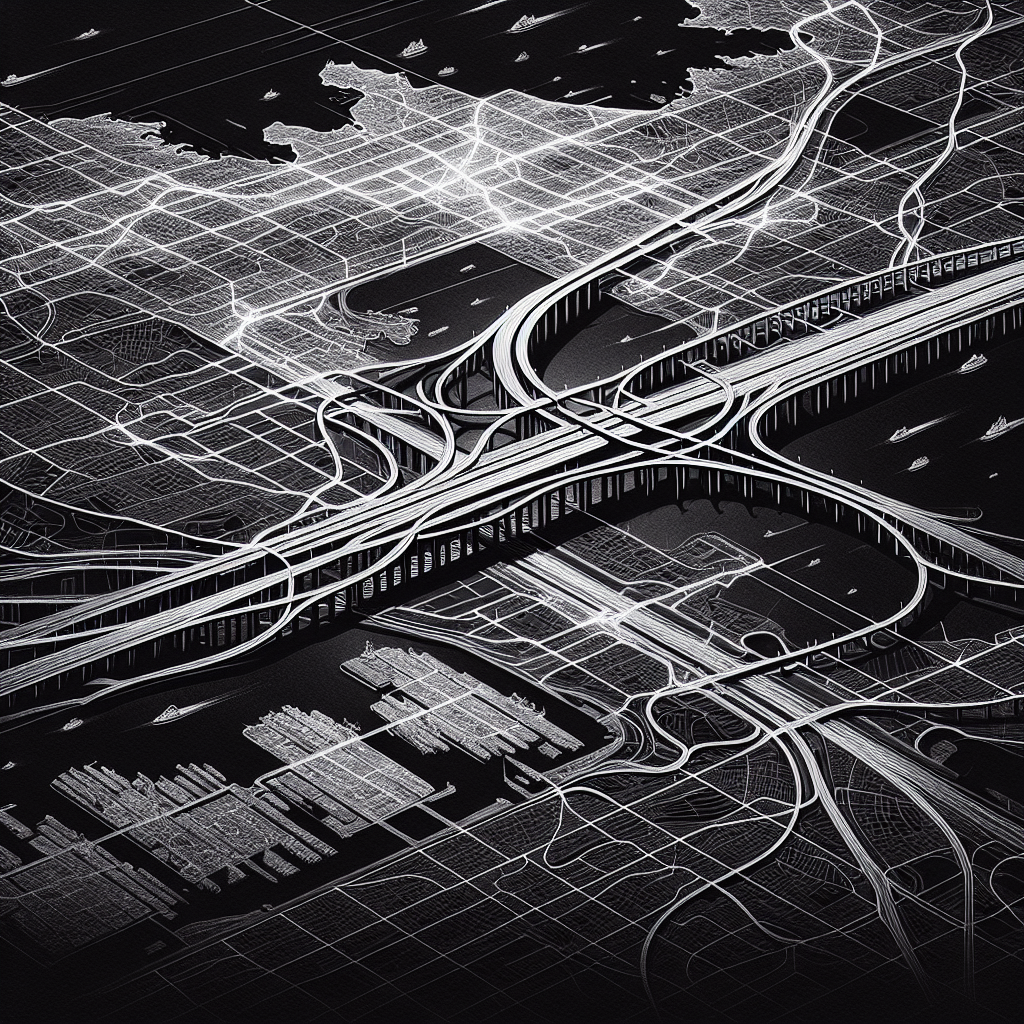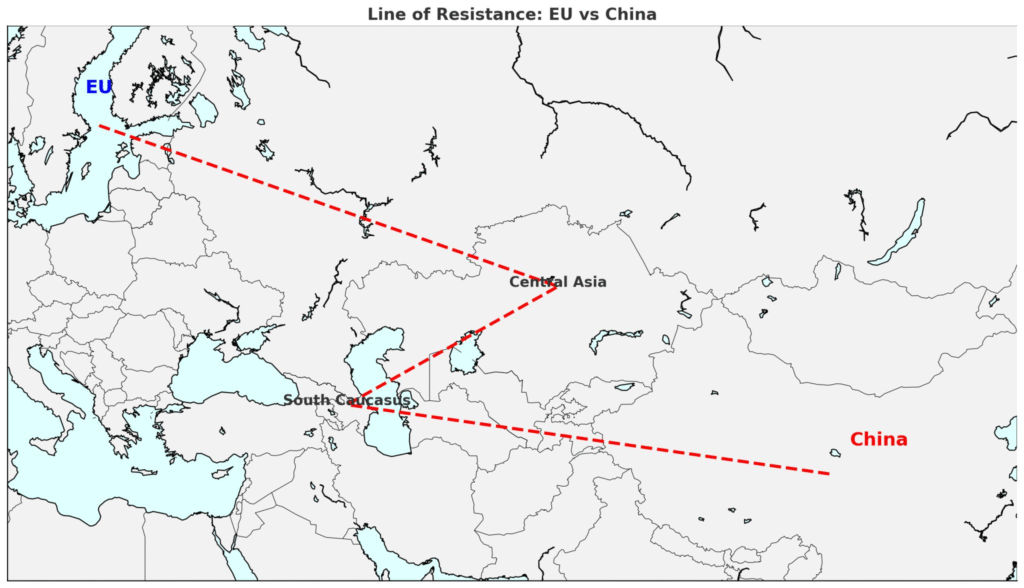The Line of Resistance Between the European Union and China Is Shifting From Central Asia to the South Caucasus

When analyzing the competition between the European Union and China across Eurasia, three geographic lines of rivalry can be identified:
- Central Asia – a region crucial in the context of competition over critical raw materials.
- South Caucasus – a strategically important transport corridor.
- Western Balkans – the EU maintains economic dominance (70% of FDI, 81% of exports) while seeking expansion, whereas China has invested €32 billion (2009–2021) to create a foothold for entering EU markets.

China and the EU compete for influence across all three regions. The EU launched its Global Gateway initiative as an alternative to China’s Belt and Road.
Since early April, four key events have taken place:
– the first full-fledged EU–Central Asia summit (April 3–4),
– Xi Jinping’s visit to Baku (April 22–24),
– the subsequent visit of EU High Representative for Foreign Affairs and Security Policy Kaja Kallas to Baku (April 25),
– and the meeting of Chinese and Central Asian foreign ministers in Almaty (April 26).
The most symbolic shift in the EU–China resistance line was marked by the launch and appointment of the Secretary General of the “Central Asia–China” Secretariat.
The Executive Director of the Secretariat, Wu Yingqin, stated that the body will strengthen the institutional base and ensure the implementation of outcomes from the China–Central Asia summit and decisions by heads of state. Through the establishment of this body, China has consolidated its presence in Central Asia. The meetings between Chinese and Central Asian foreign ministers play a key role in this process.
At the end of April, the 6th meeting of this format took place. Over time, it has succeeded in creating a framework for institutionalizing cooperation. Meanwhile, the EU and Central Asia have held 20 such meetings without achieving similar results.
THE “CHINA–CENTRAL ASIA COMMUNITY OF SHARED DESTINY” PUSHES THE EU INTO THE SOUTH CAUCASUS
The communiqué following the 6th China–Central Asia meeting emphasized institutionalization: a mechanism was launched at the level of transport ministers, with a similar one planned for agriculture.
For the first time, ministers included China’s global initiatives in the document, the “Community of Shared Future for Mankind” and the “Global Security Initiative”, announcing the creation of a closer “China–Central Asia Community of Shared Destiny.”
At the Central Conference held on April 8–9, 2025, Xi Jinping stressed the importance of a high-level connectivity network and coordinated long-term development goals with neighbors under the “Community of Shared Future for Mankind,” including Central Asian countries. This, he stated, requires efficient joint institutions.
THE EUROPEAN UNION STRENGTHENS ITS FOCUS ON THE SOUTH CAUCASUS
During Kallas’ visit, just one day after Xi’s trip to Baku, the EU and Azerbaijan officially agreed to resume negotiations on a new Partnership and Cooperation Agreement. The previous agreement, signed in 1996, has been deemed outdated by experts. Talks had stalled after the Second Karabakh War, but Kallas’ visit reflects the EU’s intent to bolster its influence in the South Caucasus in response to China’s growing activity.
Since 2022, the European Bank for Reconstruction and Development has launched (some still in the signing phase) five transport-related projects in the South Caucasus worth around €350 million, primarily in the form of loans. China is only beginning to launch its own transport projects in the region, according to various sources.
China accounts for 9.3% of total investments in the South Caucasus, ranking fourth after the EU (29.6%), Russia (14.3%), and Turkey (13.9%).In sum, Transport-related resistance between China and the EU will become more characteristic of the South Caucasus, while in Central Asia, the EU will rely on its two key advantages: soft power and the promotion of integration processes, supporting regional problem-solving initiatives.